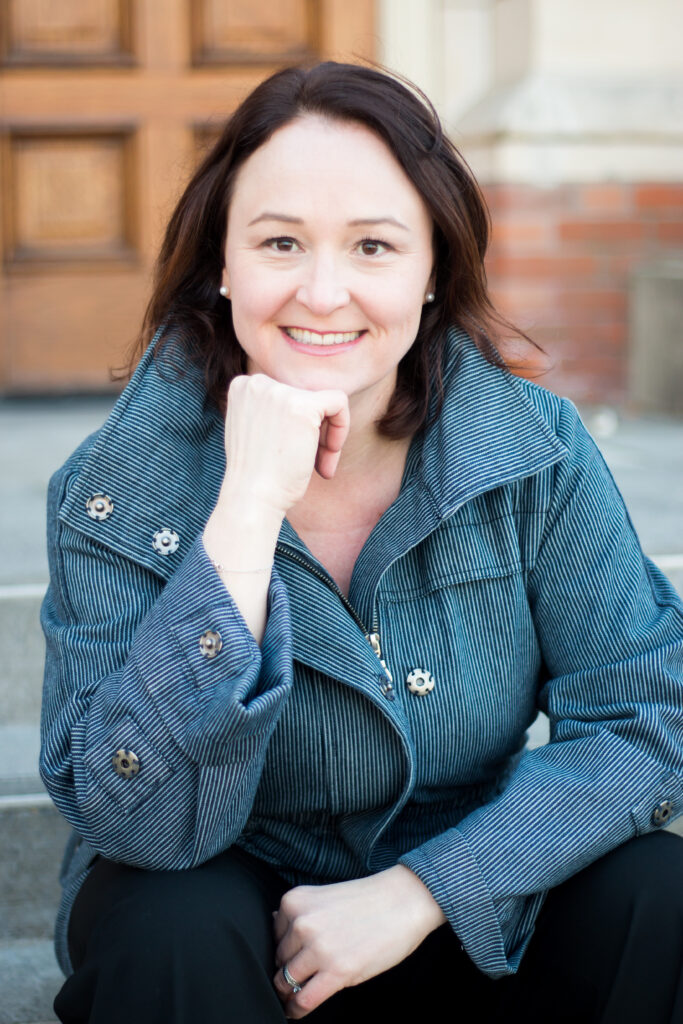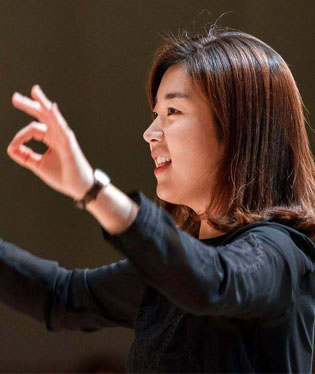
As conductors and educators, we are always looking for repertoire suggestions and inspiration; looking for something to challenge ourselves and our students, and/or something to complete our program.
I asked collegiate conductors what their “top-3 pieces” are with their choirs this fall, and why? Here are a few repertoire suggestions, from them.
– Katherine Chan
From Dr. Rachel Carlson, Director of Choral & Vocal Activities, Kean University
Ariel Ramírez (1921-2010) – Misa Criolla (SATB)
Argentinian composer Ariel Ramírez’s Misa Criolla is a setting of the Mass text in Spanish with music drawn from Argentinian folk songs and dances. The work is 20 minutes long and includes extensive solo features and a chamber orchestra that includes piano/harpsichord, guitar/charango, bass, and percussion. The Lawson-Gould edition has some typos and other problems, but there is an excellent Conductor’s Guide written by Aaron Mitchell that helps address challenges in the score. Kean is a Hispanic-Serving Intuition (HSI) and my students are excited to sing an extended choral-orchestral work in Spanish by an Argentinian composer.
Qu Xixian (1919-2008) – Pastoral (SATB)
Pastoral is an arrangement of “Mu Ge,” an Eastern Mongolian folk song, arranged by Chinese composer Qu Xixian. This arrangement is published in the choral anthology Half Moon Rising: Choral Music from Mainland China, Hong Kong, Singapore and Taiwan and is also published separately by Alliance Music. I first heard this piece in an ACDA interest session and was immediately drawn to Xixian’s expert setting of this beautiful strophic melody. Dr. Hana Cai, on faculty at Lehigh University and also on the ACDA Eastern board, has generously offered me resources for the Mandarin text, including the Chinese characters and IPA guide, and I have reached out to faculty and students who can coach the text in class. Kean has a campus in Wenzhou, China, and exploring this music is a fitting way to connect our two campuses and welcome Wenzhou-Kean students to our campus.
Christopher H. Harris – I am Loved, by (SATB)
Dr. Christopher H. Harris is currently the Director of Choral Activities at Arkansas Tech University and he has set many texts by America lyric poet Sara Teasdale to music. “I am Loved” opens with an exuberant piano introduction and is largely up-tempo. The choral writing includes divisi as well as some difficult rhythms and surprising harmonies, which will challenge my students this semester, but fortunately the writing is homophonic and the harmonies are well-supported by the piano accompaniment.
From Dr. Katherine Chan, Director of Choral Activities, Northeastern University, MA
Susanna Lindmark – Song of Hope (SSA)
I’d first heard a perform of this work by VEUS -Cor Infantil Amics de la Unió; very energetic and engaging performance. There are two contrasting section; first is slower and allows the ensemble to develop a full and rich tone, legato singing with dissonances. The second section is lively and energetic. A great piece to engage students in discussion about th meaning of the song, how we might interpret the “la la la” section, and so forth.
Listening link: https://www.youtube.com/watch?v=y7JbdnMoZgM
arr. Yu-Shan Tsai – Fa Shu Ha (SATB)
Fa Shu Ha translates in English to Under the Flower Tree, however it is also the old name for a Hakka village in Meinong, Taiwan. It represents a symbol of prosperity of the Meinong village – the village bustling with people much like the blossoming Tung flower tree. Beautiful melody and harmony, sung in Hakka (Taiwanese dialect).
Listening link: https://www.youtube.com/watch?v=tcR90maIi5U
Sarah Quartel – Songbird (SSA)
The text evokes songbirds that spin tunes of gold. A vibrant, catchy and fun piece for sopranos and altos, with the melody floating across all voice parts and scat accompaniment. My treble ensemble really enjoys this piece.
Listening Link: https://www.youtube.com/watch?v=yhzra3JP93k
From Dr. Chris Gilliaum, Director of Choral Activities at Wake Forest University, NC
Programmed for Wake Forest University Chamber Singers & Wake Forest University Lyric (Women’s Choir)
Rosephanye Powell – Non nobis, Domine (SATB)
I first heard Powell’s composition sung by the Stangeland Family Youth Choral Academy at Oregon Bach Festival, and I knew immediately that I wanted to program it as a concert opener for one of my choirs. It is an energetic, rhythmic piece that captures the listener with its compelling drive and interesting melodic material. After the main theme is introduced, the writing deftly evolves through key changes, dynamic contrast, and homophonic hymn-like passages to keep the listener engaged until the exciting final measures. The work sounds complex initially, but it is one that choristers can assimilate quickly—encouraging immediate, satisfying success—which is particularly helpful at the beginning of the semester when one wants to capture an ensemble’s imagination and enthusiasm!
Take a Listen: https://www.youtube.com/watch?v=vnCLUFT2FcY
J.S. Bach – Lobet den Herrn (SATB)
I always program this repertoire with a bit of excitement mixed with healthy trepidation. Because my ensembles are mostly non-majors, I have found that the difficulty learning (and teaching) this work can overshadow the eventual joy in singing it, and I must be intentional in the way the work is introduced and nurtured into their young voices. We all know how rewarding it can be to sing Bach—and to sing it well—so for this challenging repertoire I try to give the students all the resources they need to learn the notes and rhythms first (in sectionals and on their own). Once they have the notes in their ears and the rhythm in their body, we begin to work each phrase to put together the puzzle so that it begins to make sense in context. Some of the passages are easy to sol-fege, so I use them as a teaching tool (after notes are learned) to help assure the process is not too complex. Sometimes I must ask the students to trust me, and remind them that it may not be until after the performance that they appreciate what has been accomplished. But I also know (and remember having this experience myself) that because of the hard work they have put in, they will know they are capable of performing Bach’s music, with the hope it will be an inspiration to them for a lifetime.
Take a Listen: https://www.youtube.com/watch?v=UXvZuIEHr94
Otmar Mácha – Hoj! Hura Hoj! (SSAA)
Hoj! Hura Hoj! Is a Moravian (location, not to be confused with the denomination) Czech Mountain Song by Otmar Mácha, who was born near the area where the folk song originated. Mácha is one of Czech Republic’s most recognized and prolific composers. The work sounds and looks quite complex, but aside from the four-part SSAA split, the music is mostly homophonic with hints of polyphony. The imitative and repetitive nature of the writing gives one the impression that the music is echoing in the mountains. And while singers might be challenged initially by the occasional meter changes and the unique language and diction, it quickly becomes an ensemble favorite for the lush harmonies and the opportunity for 3 student soloists to shine, singing in separate places on the stage as if they’re calling to each other from the mountain top.
Take a Listen: https://www.youtube.com/watch?v=aqIZgvETKYI
From Dr. Riikka Pietiläinen Caffrey, Director of Choral and Vocal Performance, Boston College, MA
Zanaida Robles – “2. Bilingual” from Intersectionalit (Poetry by Rhina Espaillat)
Kristin Vining – For My Great-Great Grandson, the Space Pioneer and Para mi tataranieto, el astropionero (Poetry by Rhina Espaillat
Mark Popeney – Into wisdom, lapse to grace (Poetry by Rhina Espaillat):
Why are these Dr. Caffrey’s top picks?
Rhina Espaillat is an award-winning Dominican-American poet, whose personal papers will be housed at Boston College (BC). We are celebrating her poetry on multiple events on campus during September, and she will also do a pre-concert lecture entitled “Education: What Is It and How Does it Work?” I had already worked with her at BHCC, and it was a wonderful coincidence that her papers will move to BC at the same time as I arrived!
From Dr. Minji Kim, Assistant Professor of Music at Gordon College, MA
arr. Paul Caldwell & Sean Ivory – Ain’t No Grave Can Hold My Body Down (SSATB)
My students have been immensely enjoying working on this arrangement of “Ain’t No Grave Can Hold My Body Down.” This arrangement demonstrates a virtuosic Gospel-style spiritual. The rhythmic energy and intricate harmonies propel the emotion of the setting to its peak, followed by the eight measures of the powerful silent singing with the sign language, which hits profoundly in listeners’ hearts.
This piece is selected to perform with the combined choir of about 100 singers of mixed voices.
Take a listen (The Wartburg Choir): https://youtu.be/WiV3gI1cGHM?feature=shared
Byunghee Oh – GangGangSulLae (SSAA)
This piece is selected to share the beauty of the Eastern Asian sound, South Korea in particular. As soon as the music begins, one can hear energy generated between the traditional Korean rhythms and colorful harmonies. The sentimental middle section represents ‘Han’ the emotion of resentment, longing, and grief, which is distinctive to the nation of Korea affected by the colonial history of the country. The piece is available in an SATB setting as well.
This piece is selected to perform with the Women’s Choir at Gordon, a group of about 50 singers who are mostly non-music majors.
Take a listen (Daegu Civic Choir, South Korea): https://youtu.be/ZAkKhKi-sjU?feature=shared
Anton Bruckner – Christus factus est (SATB)
Christus factus est by Anton Bruckner is one of the most beloved motets from the Romantic period by many choral musicians. Within its a cappella setting, one can hear Bruckner’s organ music as well as his symphonic works in this motet. Permeated with the richness of harmonies and incessant suspensions, his characteristic perpetual rhythms, and the wide dynamic contrasts and modulations, this motet professes the extraordinariness of Bruckner’s choral music.
This is selected to perform with the College Choir, a mixed choir of 30 singers.
From Reagan Paras, Associate Professor Music Education, Berklee College of Music, MA
Nilo Alcala – Kaisa-ia Niyan
One of the most performed pieces in the severely underperformed Filipino genre is the brilliant Kaisa-isa Niyan. This particular piece hails from the Maguindanao region in the Philippines and mimics the percussion ensemble known as kulintang. The lyrics are sung in the Maguindanaon dialect with onomatopoeic phrases imitating the kulintang instruments. From start to finish, this incredible piece is exciting and is sure to bring the house down.
Matthew Maniano – Sa Kayang Paglalayag by
In memoriam to his friend Ronnel Paz, Ily was deeply moved and inspired and thus composed this piece in one day. The lyrics are in Tagalog and are written by Ronnel. This contemplative and slow piece depicts a man crossing a river in a kayak serving as an analogy of life crossing over to death. It starts with a canon in the treble voices with the tenor/bass voices serving as a drone. The moving lines mimic the gentle waves which culminate into a gorgeous crescendo. It is a beautifully composed piece and will appeal to the listener’s deep emotions.
Saunder Choi– Leron Leron, Sinta
Saunder Choi is an up-and-coming Filipino composer writing masterpieces that are being performed across the globe. This song is a well-known Filipino children’s folk song. It depicts a girl asking a boy named Leron to climb a papaya tree so that he can pick the fruit for her. The use of dynamic contrast, driving rhythms, and light-hearted melody is sure to bring a smile.

Dr. Rachel Carlson is the Director of Choral and Vocal Activities at Kean University in Union, NJ, where she conducts the Kean University Concert Choir and Chorale and teaches Aural Skills. She previously served as the Director of Choral Activities at Shepherd University in Shepherdstown, WV, where she conducted the Chamber Singers, Camerata Soprano/Alto choir, and Masterworks Chorale and taught choral methods, conducting, and voice. She founded Six Degree Singers, a community choir based inSilver Spring, MD, in 2009 and currently serves as President of the MD/DC chapter ofthe American Choral Directors Association (ACDA).

A conductor praised for his “precision and clarity,” and performances hailed as “enlightened,” Christopher Gilliam is the Director of Choral Activities at Wake Forest University, director of the Winston-Salem Symphony Chorus, artistic director and conductor for Winston-Salem Choral Artists, and Director of Music at Highland Presbyterian Church in Winston-Salem.

Dr. Riikka Pietiläinen Caffrey holds the position of Associate Professor of the Practice and Director of Choral and Vocal Performance. Dr. Caffrey was born in Kemi, Finland, and sang and toured with the acclaimed Finnish choir Philomela. She immigrated to the US to pursue music studies. While in New York, she founded and conducted Las Sirenas, a women’s chamber choir, at the City College of New York, premiering works by American and Finnish composers. She has held academic positions at American University in Beirut, Lebanon, Whitman College in Walla Walla, WA, and Bunker Hill Community
College in Boston.

Choral conductor, Dr. Minji Kim, joins Gordon College as Assistant Professor of Music. She has served as Visiting Assistant Professor and Assistant Director of Choral Studies at the University of Nevada, Las Vegas, where she directed the University Chorale and Chamber Consort, and taught Undergraduate Choral Literature, Advanced Choral Conducting, and Choral Methods classes. During her doctoral studies at the University of Maryland (UMD), she conducted and assisted the UMD Chamber Choir, University Chorale, and Treble Choir, and taught undergraduate conducting classes. Additionally, she served as a chorus master for major orchestras such as the National Symphony Orchestra and Baltimore Symphony Orchestra for various works including “Across the Lines of Dreams” by Roxanna Panufnik and Rossini’s Stabat Mater, and Kurt Weill’s oratorio “The Road of Promise” and Handel’s Messiah for UMD SymphonyOrchestra.

Reagan G. Paras serves as an associate professor for Berklee College of Music in the music education department. A passionate conductor, singer, and educator, he has directed performance tours across the United States and abroad. He is the artistic director for Many Voices: Mechanics Hall Youth Singers, performing repertoire that authentically honors the mosaic of cultures represented in the ensemble.
Australian conductor, Dr. Katherine Chan, is known for her energy and enthusiasm on the podium. As Director of Choral Activities and Associate Teaching Professor of Music at Northeastern University, Chan conducts the Northeastern University Choral Society (Chorus), Chamber Singers, Mosaic Advance Treble Ensemble, and teaches courses in conducting, music theory, and piano. She may be contacted at [email protected].
